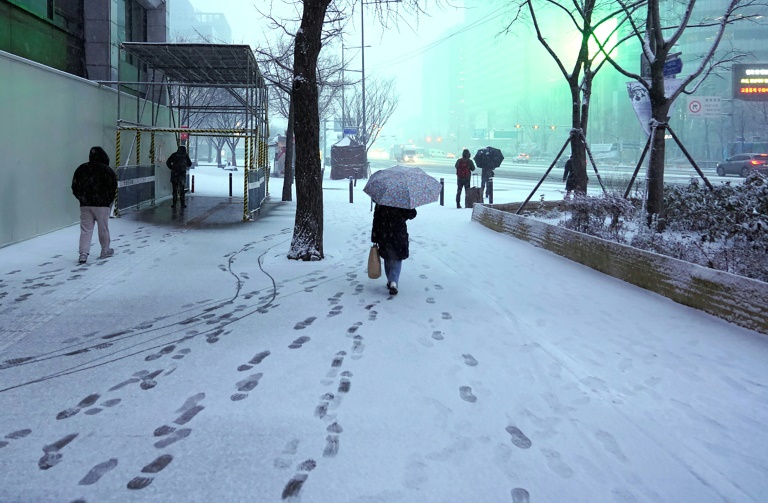By Ramin Ganeshram, The New York Times
During the Lunar New Year of 1988, Selena Wong wanted to create a special dessert for her family in Kingston, Jamaica. Wong, whose ancestors came to the island from China in the 19th century, was a self-taught baker who occasionally sold goods from her home.
Knowing the importance of lychees to the Chinese Jamaican experience, she made a light sponge cake that featured the canned lychees and their syrup. “I was riffing on the idea of strawberry shortcake, which has always been popular in Jamaica, even though strawberries aren’t native to us,” she said.
Her creation, which she simply called “lychee cake,” was a hit with her family, and, within a few years, a national obsession was born. The cake has become one of Jamaica’s most popular desserts, sold in grocery stores and pastry shops and by home bakers. It has even emigrated from Jamaica to become a cultural staple in cities with large Jamaican American enclaves, like Miami.
In the United States, lychee cake remains very much the bailiwick of Caribbean home bakers. In 1978, Kay Chen, 84, emigrated from Jamaica to Miami to operate a Blockbuster video franchise. Before that, Chen, also a descendant of late-19th-century Chinese immigrants to Jamaica, was a seamstress, flower arranger, beautician, nightclub owner, restaurateur and beauty queen, crowned Miss Chinese Jamaica in the 1950s.
But, like many Caribbean women, she turned to baking for family and friends for extra money, making a variety of desserts — black cake, pone, ambrosia and, of course, lychee cake. A favorite among her customers, she considers it a “special occasion cake,” she said, while in the middle of making a double-size one for a funeral.
Nikki Stultz, who once sold lychee cakes out of her Miami home, is now considering continuing that work in Marietta, Georgia, where she recently moved. “One year, I sold 300 cakes in the holiday season,” said Stultz, whose family also emigrated from China to Jamaica in the late 1800s.
Lychee remains one of the ingredients most associated with the descendants of Chinese immigrants, who first arrived in the Caribbean in the early 1800s as contract workers or indentured laborers to work in sugar cane fields mostly in Cuba, Jamaica and Trinidad. Emigration from China continues today, leaving an indelible impact on local foodways.
“This became a favorite cake for my mother’s birthday in the last 15 years of her life,” said Virginia Burke, author of the cookbook “Eat Caribbean,” about the region’s cuisine. Burke, who is not of Chinese descent, recalls eating canned lychees over vanilla ice cream in Jamaica’s Chinese restaurants as a child.
Although lychees trees were transported to Jamaica from China in the 18th century, the fresh fruit isn’t used in the cake. The reason, said Burke — and confirmed by Wong — is that the trees have a fickle bearing cycle, which makes them expensive.
“Plus most Jamaicans wouldn’t give up the pleasure of eating fresh lychee out of hand,” Burke said.
Elise Yap, proprietor of the The Blue House Bed & Breakfast in Ocho Rios, Jamaica, which serves lychee cake for its weekly Chinese Jamaican night, agrees that lychee is what she calls a “crave” for Jamaicans. Her adopted father’s Jamaica Ice Cream Co. created a lychee ice cream in the 1940s.
Stultz says, “I think this cake is popular because it’s so fresh.” Like many lychee cake bakers, she keeps her particular recipe secret. “It feels like a simple cake, but it’s really not,” she said. “It’s tricky to get the sponge light and to whip the cream so it holds.”
Back in Jamaica, Wong credits lychee cake as starting what is now her successful pastry business. Also known for her elaborate wedding cakes, she recently opened a dessert shop called the Bakery in Kingston, and created the wedding cake for the Hulu series “Black Cake.”
“I’ve made lychee cake for prime ministers, actors, musicians,” said Wong, whose shop sells the cake by the slice. “It’s become a very special cake for Jamaicans.”
Recipe: Lychee Cake
By Ramin Ganeshram
Chinese Jamaican bakers might closely guard the secrets to their lychee cake recipes, but typical components include fluffy sponge cake, sweetened cream filling and decorative fruits, for garnish. Lychee cake was originally created by Selena Wong, a professional baker, about 40 years ago to celebrate the Lunar New Year, and home bakers also sell the confection. Lychee is delicately flavored and watery, so producing a strong lychee flavor can be tricky. This recipe infuses the cake with lychee flavor by reducing lychee into a glaze, sauce and filling, thus introducing it into the batter, glaze, filling and garnish. Rose water, common in Jamaican baking, intensifies lychee’s floral notes. This cake uses canned lychees, because fresh ones are hard to find (and too watery for baking), but if you can find fresh lychees at Asian markets in the summertime, they make a wonderful garnish, along with other fresh fruits of your choice.
Yield: 1 (8-inch) layer cake (10 to 12 servings)
Total time: About 2 1/4 hours, plus cooling and chilling
Ingredients
For the Lychee Glaze, Filling and Sauce:
- 3 (20-ounce/565-gram) cans lychees in syrup
- 1 tablespoon freshly squeezed lemon juice
- 1 teaspoon powdered fruit pectin
- 1/4 teaspoon rose water
For the Cake:
- Nonstick baking spray
- 1 cup/128 grams cake flour
- 1 1/2 teaspoons baking powder
- 1/4 teaspoon coarse kosher salt (such as Morton)
- 1 small lemon, zested
- 1 cup/200 grams granulated sugar
- 5 large eggs, yolks and whites separated
- 1/2 cup lychee sauce (recipe below)
- 1/4 teaspoon rose water
- Pinch cream of tartar
For the Cream Filling:
- 1 cup/240 milliliters heavy cream
- 1/2½ cup/4 ounces mascarpone
- 1/4 cup/31 grams confectioners’ sugar
- 1/8 teaspoon rose water
For the Fruit Garnish:
- 6 to 7 fresh lychees, peeled and seeded
- 2 to 3 strawberries, stemmed and quartered
- 1 kiwi, peeled and sliced into wedges
- 1 (8-ounce) can mandarin orange slices in syrup
Preparation
1. Make the lychee glaze: Drain all the canned lychee liquid into a large (12-inch) skillet, setting aside the lychees. Bring the lychee liquid to a simmer over medium-high heat and cook until reduced to a slightly thickened syrup that coats the back of a spoon, 15 to 20 minutes. You should have 1/2 to 2/3 cup light-golden glaze. Set aside to cool.
2. Make the lychee filling: Place the lychees in a high-speed blender and purée until as smooth as possible, about 30 seconds. Pour the lychee purée through a fine-mesh sieve into a medium bowl, pressing the solids to extract the juice. Reserve the juice. Combine the lychee solids, 1/4 cup of the pressed lychee juice and the lemon juice in a medium (10-inch) skillet and place over medium-low heat. Bring the mixture to a simmer, then stir in the fruit pectin. Simmer, stirring often, until the mixture thickens and does not come back together when a spoon is run through it, 7 to 10 minutes. Stir in the 1/4 teaspoon rose water and set aside to cool. You will have about 1/2 cup filling.
3. Make the lychee sauce: Place another medium skillet over medium heat and simmer the remaining pressed lychee juice, stirring often, until reduced to a slightly thickened sauce that coats the back of a spoon, 10 to 15 minutes. Remove from the heat and set aside to cool. You should have about 3/4 cup.
4. Make the cake: Heat oven to 350 degrees. Prepare two 8-by-2-inch round cake pans by lining the bottom with a circle of parchment and spraying the bottom and sides well with baking spray.
5. In a medium bowl, whisk together the cake flour, baking powder and salt; set aside. In the bowl of a stand mixer fitted with the whisk attachment, combine the lemon zest, sugar and egg yolks and whisk until just fully combined. Place this bowl over a medium saucepan of simmering water. (The base of the bowl should not touch the water.) Whisk continuously until the sugar is melted and the mixture is just warm to the touch, about 2 minutes. Remove from heat and return the bowl to the stand mixer. Whisk on high speed until the mixture is very pale yellow and almost doubled in size, 7 or 8 minutes.
6. Decrease speed to low, and gradually pour in 1/2 cup of the lychee sauce from Step 3, reserving the rest. Add the 1/4 teaspoon of rose water; the mixture will deflate a little. Continue to whip for 1 to 2 minutes. Using a flexible spatula, gently fold the flour mixture into the egg yolk mixture until just combined.
7. In a separate bowl, whip the egg whites with a pinch of tartar to medium peaks. (You may also do this by hand or using a handheld mixer in a separate bowl.) Fold the whipped egg whites into the batter until just combined, being careful not to deflate the whites too much. Pour the batter into the prepared cake pans and tilt the pans to distribute the batter evenly.
8. Set the pans on a baking sheet and bake until the cakes are light-golden brown and spring back when touched, 23 to 28 minutes. A cake tester inserted into the middle of each cake should come out clean.
9. Remove cakes from oven and allow to cool in pans for 10 minutes, then run a knife around the edge of the cakes and flip the pans onto a wire rack. Remove the parchment paper and allow the cakes to cool to just warm to the touch, about 15 minutes. Prick each cake several times with a toothpick and then brush the remaining lychee sauce on the tops and sides of each cake. Set aside to cool fully, at least 30 minutes. (At this stage, you can wrap the cakes and refrigerate up to 2 days. The longer the layers sit, the more intense the lychee flavor will become.)
10. Make the cream filling: Combine the heavy cream, mascarpone, confectioners’ sugar and the 1/8 teaspoon rose water in the bowl of a stand mixer fitted with the whisk attachment. Whip to stiff peaks, 2 to 3 minutes.
11. Assemble the cake: Place one layer of the cake on a plate or cake stand, puffy side down. Smooth a heaping 1/3 cup of the lychee filling from Step 2 evenly on top. Smooth one-third of the whipped cream filling on top of the lychee filling. Place the second cake on top, puffy side down, and smooth the remaining lychee filling on top, followed by half of the remaining cream filling. Frost the sides of the cake with the remaining cream filling.
12. Decorate the top of the cake with the lychees, strawberries, kiwi and mandarin orange slices, then brush the fruits with the reserved lychee glaze so that they are glossy. If desired, you may pour any remaining glaze along the cake’s edges and allow it to drop down the sides. Chill cake for 10 minutes before serving and store leftover cake in the refrigerator for up to 5 days.
This article originally appeared in The New York Times.






